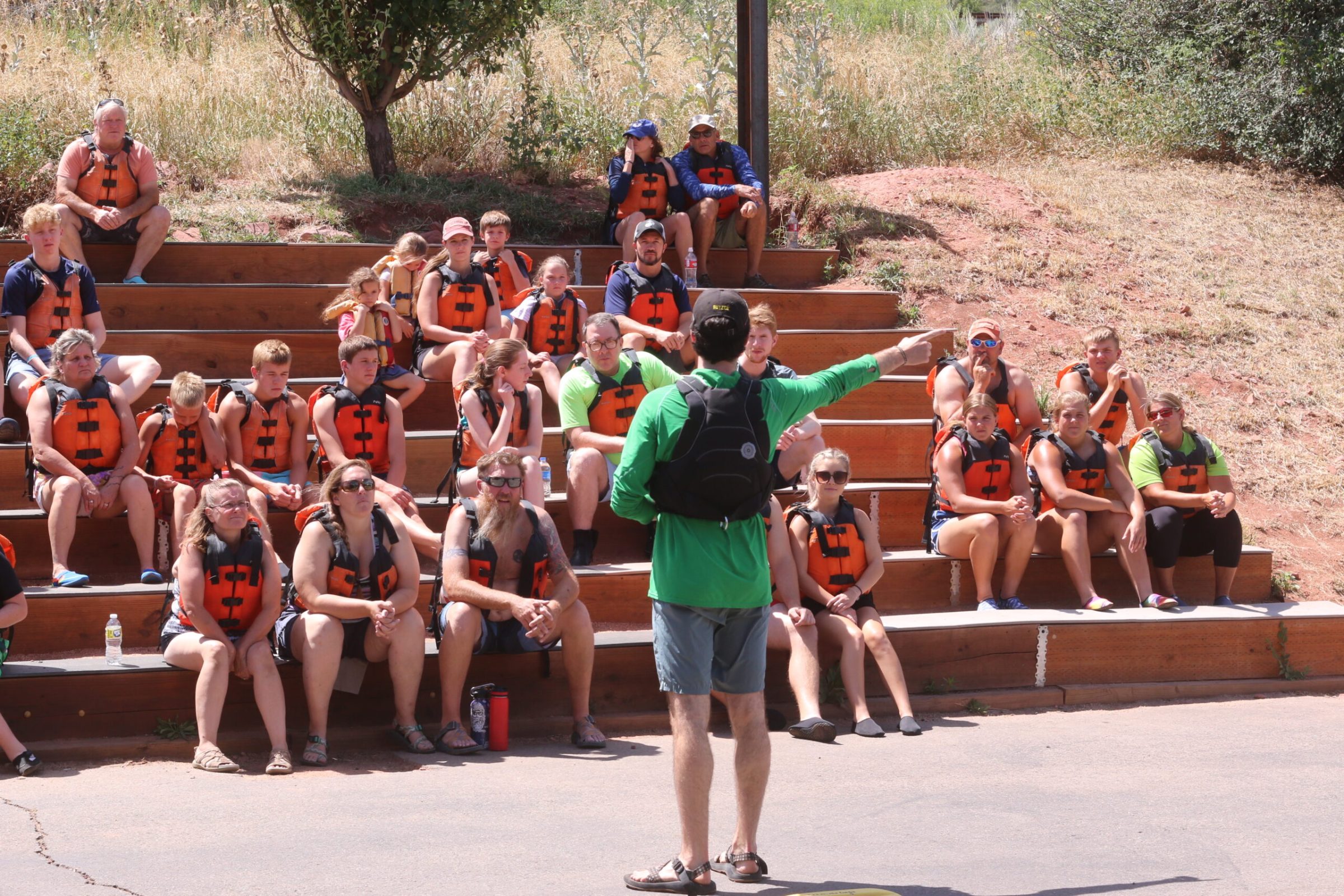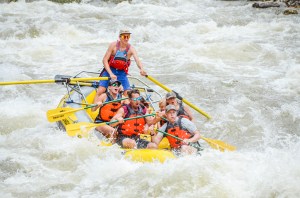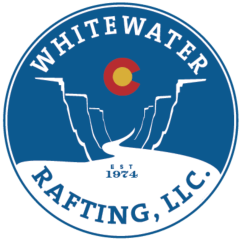How to Become a Colorado Whitewater Rafting Guide

 If you love the river, becoming a Colorado whitewater rafting guide may be the perfect career. But what does it take to become a rafting guide? It depends on the outfitter you plan on working with, as each has its own standards. However, there are a few basic requirements that you’ll need to meet. In this blog post, we’ll give you the lowdown on how to become a whitewater rafting guide in Colorado.
If you love the river, becoming a Colorado whitewater rafting guide may be the perfect career. But what does it take to become a rafting guide? It depends on the outfitter you plan on working with, as each has its own standards. However, there are a few basic requirements that you’ll need to meet. In this blog post, we’ll give you the lowdown on how to become a whitewater rafting guide in Colorado.
When to Start
If you want to get an entire rafting season under your belt, plan to start in the spring. Most rafting outfitters begin solidifying their teams in the first part of the year, so they are ready to go when the runoff fills the Colorado rivers in early spring. Companies that run at higher elevations will need staff sooner since the rivers fill there first.
If the rafting season just ended and it’s currently the fall, consider reaching out to see if they’re looking for anyone for next season. Some companies may be looking to hire as soon as the previous season ends.
Getting Training
New rafting guides must meet specific state standards in Colorado before guiding a commercial rafting trip. The state currently requires 50 hours of certified training, CPR certification, and First-Aid instruction.
Many Colorado rafting companies offer their own guide training courses that can last up to two weeks or more and include river guide skills, CPR certification, and first aid lessons. The next step in hiring a guide is river-specific training. To be certified on a specific stretch of river, guides must typically train on that section, then guide the section with a trainer before qualifying and being allowed to guide that river on their own.
Colorado’s various commercially rafted rivers are managed by different groups and have their own requirements. For example, the Arkansas River is governed by the Arkansas Headwaters Recreation Area. That organization requires a specific number of miles on the Arkansas River to become a guide and additional training to be an instructor.
The guide training and tryout process can change seasonally based on specific staffing needs for that outfitter. In some seasons, there may be full guide training followed by new jobs offered to those who complete the training. At other times, many experienced guides may be returning, so outfitters may not offer training at all.

Rafting Skills You Need
To become a certified rafting guide or instructor, it is crucial to master a few essential skills. These traits will help you stay safe in the river and give you the knowledge to lead a group of rafters down the waterway. These skills can help ensure you’re hired following your rafting training:
Safety First
Rafting guides are expected to be safe. A good raft guide always looks out for their riders. They are ultimately responsible for everyone on the raft and on the river. Knowing CPR and first aid is essential. If your riders don’t feel safe, no one will enjoy themselves.
Physical Fitness
Rafting is a physical job, so you must be in good shape. If you’re guiding a raft down the river, you’ll need to master the art of paddling. If you’re leading a group of novices, you may need to do the lion’s share of paddling, which can be exhausting. You’ll need upper and lower body strength to sustain a good paddle through more challenging sections rated Class III and IV.
Guiding Skills
As the leader of a rafting trip, one of your primary duties is to read the water and choose appropriate lines for your raft to traverse. You should get a good feel for a specific section of the river through repetition. However, the lines can change as the water levels rise and fall, so you’ll always need to stay on your toes and keep abreast of the current water conditions for your section.

Leadership Skills
A big part of being a decent rafting guide is taking ownership of the raft and being a leader. Your riders will look to you to show the way, so don’t let them down. They expect you to be knowledgeable and able to make quick decisions when things get hairy. A primary responsibility of a good rafting guide is to make everyone in your raft feel comfortable. For the duration of your trip, consider your passengers part of the team. Also, guides must deal with all types of personalities regarding rafting, so patience and good social skills are essential.
Local Knowledge
Rafting guides are a lot like tour guides. It’s important to understand the local area and be able to provide interesting tidbits along the way. A quality guide is knowledgeable and enthusiastic about what they’re doing.
Desire to Improve
The best whitewater guides strive to get better over time. That desire to improve comes from being committed to rafting 100%. There is always additional training and courses that you can take to improve your skill set, such as a swift water rescue class. A smart rafting guide is open to constructive feedback that can make them better. A devoted guide can always find ways to get better. Like any craft, getting there takes time, effort, and patience.
Love of Nature
The best river guides care about the environment and act by their river permits. Many guides practice the “leave no trace” philosophy of minimizing your footprint and leaving the environment the same, or better, than before you arrived.
Overview
Becoming a whitewater rafting guide isn’t the simplest task, but it can be wildly rewarding. Imagine ripping down the river in your raft, paddle in hand, and giving out commands to your team. You can do it for a couple of seasons, or it can be an entire career. That part is up to you. But if you follow the tasks we outlined in this blog, you will be well on your way. Many rafting guides started part-time and later became full-timers because of their intense love for the rush of rafting!
